*Historic areas of Istanbul were added to the UNESCO World Heritage List in 1985.
*The city of Istanbul was chosen as joint European Capital of Culture for 2010.
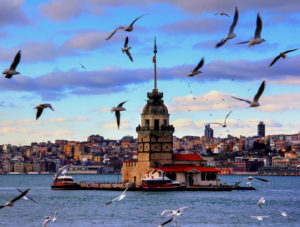 |
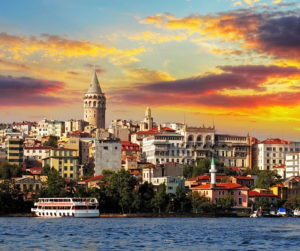 |
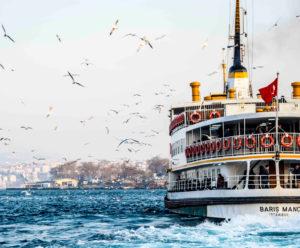 |
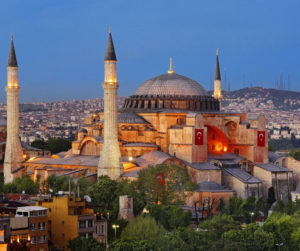 |
 |
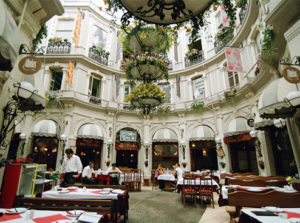 |
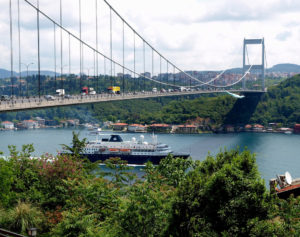 |
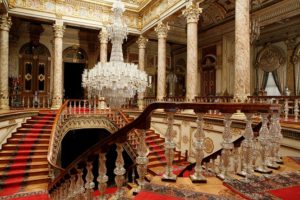 |
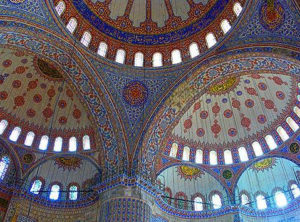 |
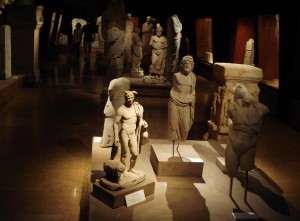 |
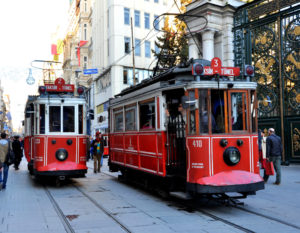 |
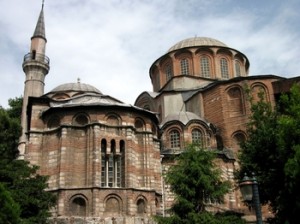 |
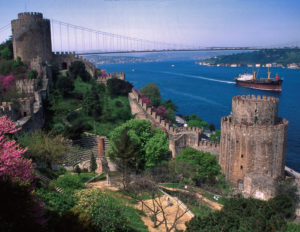 |
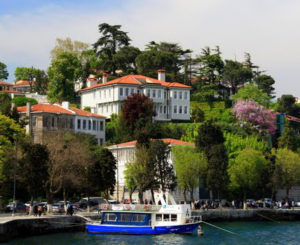 |
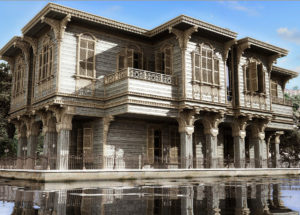 |
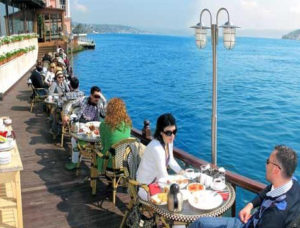 |
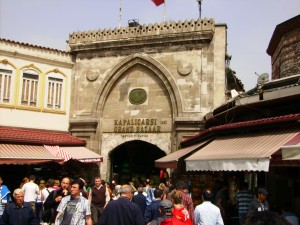 |
Istanbul,( historically known as Byzantium and Constantinople) is the largest city in Turkey and fourth largest city proper in the world with a population of 12.8 million, also making it the second largest metropolitan area in Europe by population, and the largest metropolitan city proper. Istanbul is also a megacity, as well as the cultural, economic, and financial centre of Turkey. The city covers 39 districts of the Istanbul province. It is located on the Bosphorus Strait and encompasses the natural harbour known as the Golden Horn, in the northwest of the country. It extends both on the European (Thrace) and on the Asian (Anatolia) sides of the Bosphorus, and is thereby the only metropolis in the world that is situated on two continents.
In its long history, Istanbul has served as the capital city of the Roman Empire (330–395), the Eastern Roman (Byzantine) Empire (395–1204 and 1261–1453), the Latin Empire (1204–1261), and the Ottoman Empire (1453–1922). The city was chosen as joint European Capital of Culture for 2010. Historic areas of Istanbul were added to the UNESCO World Heritage List in 1985.
Istanbul is located in northwestern Turkey within the Marmara Region on a total area of 5,343 square kilometers (2,063 sq mi).[note 2] The Bosphorus, which connects the Sea of Marmara to the Black Sea, divides the city into a European side, comprising the historic and economic centers, and an Asian, Anatolian side; as such, Istanbul is the only bi-continental city in the world. The city is further divided by the Golden Horn, a natural harbor bounding the peninsula on which the former Byzantium and Constantinople were founded. In the late-19th century, a wharf was constructed in Galata at the mouth of the Golden Horn, replacing a sandy beach that once formed part of the inlet’s coastline.[62] The confluence of the Sea of Marmara, the Bosphorus, and the Golden Horn at the heart of present-day Istanbul has deterred attacking forces for thousands of years and still remains a prominent feature of the city’s landscape.
The historic peninsula is said to be built on seven hills, each topped by an imperial mosque, surrounded by 22 kilometers (14 mi) of city walls; the largest of these hills is the site of Topkapı Palace on the Sarayburnu.[63] Rising from the opposite side of the Golden Horn is another, conical hill, on which the more modern Beyoğlu district is situated. Because of the topography, buildings were once constructed with the help of terraced retaining walls (some of which are still visible in older parts of the city), and roads in Beyoğlu were laid out in the form of steps. Üsküdar on the Asian side exhibits similarly hilly characteristics, with the terrain gradually extending down to the Bosphorus coast, but the landscape in Şemsipaşa and Ayazma is more abrupt, akin to a promontory. The highest point in Istanbul is Çamlıca Hill (also on the Asian side), with an altitude of 288 meters (945 ft).
Istanbul Province has 39 districts (2009), of which 27 form the city proper of Istanbul, also called Greater Istanbul, administered by the Istanbul Metropolitan Municipality (or Municipality of Metropolitan Istanbul) (Turkish: İstanbul Büyükşehir Belediyesi). Istanbul’s districts are divided into three main areas:
* The historic peninsula of old Istanbul corresponds approximately to the extent of Constantinople in the 15th century; it comprises the districts of Eminönü and Fatih. This area lies on the southern shores of the Golden Horn, which separates the old city centre from the northern and younger parts of the European side. The historic peninsula ends with the Theodosian Land Walls in the west. The peninsula is surrounded by the Sea of Marmara on the south and the entrance of the Bosphorus on the east.
* North of the Golden Horn are the historical Beyoğlu and Beşiktaş districts, where the last Sultan’s palace is located, followed by a chain of former villages such as Ortaköy and Bebek along the shores of the Bosphorus. On both the European and Asian sides of the Bosphorus, wealthy Istanbulites built luxurious chalet mansions, called yalı, which were used as summer residences.
* The districts of Üsküdar (ancient Chrysopolis) and Kadıköy (ancient Chalcedon) which are located on the Asian side were originally separate cities (like the district of Beyoğlu (medieval Pera) on the European side also used to be.) These cities have eventually been absorbed by Istanbul and have become its districts. Today, the Asian side of the city has numerous modern residential areas and business districts, and is home to around one-third of Istanbul’s population.
* To the west, to the east and to the north, Istanbul extends far beyond its historical quarters. The tallest office and residential towers rise particularly in the quarters of Levent, Etiler and Maslak on the European side, and in the quarter of Kozyatağı on the Asian side.
* The city has been the seat of the Ecumenical Patriarchate since the 4th century AD, and continues to serve as the seat of some other Orthodox churches, such as the Turkish Orthodox Church and the Armenian Patriarchate. The city was formerly also the seat of the Bulgarian Exarchate, before its autocephaly was recognised by other Orthodox churches.
* The Sephardic Jews have lived in the city for over 500 years. They fled the Iberian Peninsula during the Spanish Inquisition of 1492, when they were forced to convert to Christianity after the fall of the Moorish Kingdom of Andalucia. The Ottoman Sultan Bayezid II (1481–1512) sent a sizable fleet to Spain under the command of Kemal Reis in order to save the Sephardic Jews, as at that point in the Caliphate’s history it was a beacon of tolerance compared to much of Christendom. More than 200,000 fled first to Tangier, Algiers, Genova and Marseille, later to Salonica and finally to Istanbul. The Sultan granted over 93,000 of these Spanish Jews to take refuge in the Ottoman Empire. Another large group of Sephardic Jews came from southern Italy which was under Spanish control. The İtalyan Sinagogu (Italian Synagogue) in Galata is mostly frequented by the descendants of these Italian Jews in Istanbul, where more than 20,000 Sephardic Jews still remain today. There are about 20 synagogues, the most important of them being the Neve Shalom
Apart from being the largest city and former political capital of the country, Istanbul has always been the centre of Turkey’s economic life because of its location as a junction of international land and sea trade routes. Istanbul is also Turkey’s largest industrial centre. It employs approximately 20% of Turkey’s industrial labour and contributes 38% of Turkey’s industrial workspace.
Culture and contemporary life
Istanbul is becoming increasingly colourful in terms of its rich social, cultural, and commercial activities. While world famous pop stars fill stadiums, activities like opera, ballet and theatre continue throughout the year. During seasonal festivals, world famous orchestras, chorale ensembles, concerts and jazz legends can be found often playing to a full house. The Istanbul International Film Festival is one of the most important film festivals in Europe, while the Istanbul Biennial is another major event of fine arts.
Istanbul Archaeology Museum, established in 1881, is one of the largest museums of its kind in the world. The museum contains more than 1,000,000 archaeological pieces from the Mediterranean basin, the Balkans, Middle East, North Africa and Central Asia.
Istanbul Mosaic Museum contains the late Roman and early Byzantine floor mosaics and wall ornaments of the Great Palace of Constantinople. The nearby Turkish and Islamic Arts Museum displays a vast collection of items from various Islamic civilisations. Sadberk Hanım Museum contains a wide variety of artifacts, dating from the earliest Anatolian civilisations to the Ottomans.
Occasionally, in November, the Silahhane (Armory Hall) of Yıldız Palace hosts the Istanbul Antiques Fair, which brings together rare pieces of antiques from the Orient and Occident. The multi-storey Mecidiyeköy Antikacılar Çarşısı (Mecidiyeköy Antiques Bazaar) in the Mecidiyeköy quarter of Şişli is the largest antiques market in the city, while the Çukurcuma neighbourhood of Beyoğlu has rows of antiques shops in its streets. The Grand Bazaar, edificed between 1455–1461 by the order of Sultan Mehmed the Conqueror also has numerous antiques shops, along with shops selling jewels, carpets and other items of art and artisanship. Historic and rare books are found in the Sahaflar Çarşısı near Beyazıt Square, and it is one of the oldest book markets in the world, and has continuously been active in the same location since the late Roman, Byzantine and Ottoman periods.
Live shows and concerts are hosted at a number of locations including historical sites such as the Hagia Irene, Rumeli Fortress, Yedikule Castle, the courtyard of Topkapı Palace, and Gülhane Park; as well as the Atatürk Cultural Center, Cemal Reşit Rey Concert Hall and other open air and modern theatre halls.
A significant culture has been developed around what is known as a Turkish Bath. It was a culture of leisure during the Ottoman period, the finest example being the Çemberlitaş Hamamı (1584) in Istanbul, located on the Çemberlitaş (Column of Constantine) Square.
Recreation
Traditional beach resorts had gradually disappeared due to water pollution. Recently, however, old places have reopened in the city. The most popular places for swimming in the city are in Bakırköy, Küçükçekmece, Sarıyer and the Bosphorus. Outside the city are the Marmara Sea’s Princes’ Islands, Silivri and Tuzla; as well as Kilyos and Şile on the Black Sea.
The Princes’ Islands (Prens Adaları) are a group of islands in the Marmara Sea, south of the quarters Kartal and Pendik. Pine and stone-pine wooden neoclassical and art nouveau-style Ottoman era summer mansions from the 19th and early 20th centuries, horse-drawn carriages (motor vehicles are not permitted) and seafood restaurants make them a popular destination.Of the nine islands, only five are settled.
Şile is a distant and well-known Turkish seaside resort on the Black Sea, 50 kilometres (31 mi) from Istanbul, where unspoiled white sand beaches can be found. Kilyos is a small calm seaside resort not far from the northern European entrance of the Bosphorus at the Black Sea. The place has good swimming possibilities and has become popular in the recent years among the inhabitants of Istanbul as a place for excursions. Kilyos offers a beach park with seafood restaurants and night clubs, being particularly active in the summer with many night parties and live concerts on the beach.
Shopping
The Grand Bazaar is one of the largest covered markets in the world. Istanbul has numerous historic shopping centers, such as the Grand Bazaar (1461), Mahmutpaşa Bazaar (1462) and the Egyptian Bazaar (1660). The first modern shopping mall was Galleria Ataköy (1987), which was followed by dozens of others in the later decades, such as Akmerkez (1993) which is the only mall to win both “Europe’s Best” and “World’s Best” awards by the ICSC; Metrocity (2003); Cevahir Mall (2005) which is the largest mall in Europe; and Kanyon Mall (2006) which won the 2006 Cityscape Architectural Review Award for its interesting design. İstinye Park (2007) and City’s Nişantaşı (2008) are two new malls which target high-end consumers and are almost exclusively dedicated to world-famous fashion brands.
Restaurants
Along with the traditional Turkish restaurants, many European and Far Eastern restaurants and numerous other cuisines are also thriving in the city. Most of the city’s historic winehouses (meyhane in Turkish) and pubs are located in the areas around İstiklal Avenue in Beyoğlu. The 19th century Çiçek Pasajı (literally Flower Passage in Turkish, or Cité de Péra in French) on İstiklal Avenue, which has many historic meyhanes, pubs and restaurants, was built by Hristaki Zoğrafos Efendi at the former site of the Naum Theatre and was inaugurated in 1876. The famous Nevizâde Street, which has rows of historic meyhanes next to each other, is also in this area. Other historic pubs are found in the areas around Tünel Pasajı and the nearby Asmalımescit Sokağı. Some historic neighbourhoods around İstiklal Avenue have recently been recreated, with differing levels of success; such as Cezayir Sokağı near Galatasaray Lisesi, which became unofficially known as La Rue Française and has rows of francophone pubs, cafés and restaurants playing live music.
Istanbul is also famous for its historic seafood restaurants. The most popular seafood restaurants are generally found along the shores of the Bosphorus and by the Marmara Sea shore towards the south of the city. The largest of the Princes’ Islands in the Sea of Marmara (namely Büyükada, Heybeliada, Burgazada and Kınalıada) and Anadolu Kavağı near the northern entrance of the Bosphorus towards the Black Sea (close to Yoros Castle, which was also known as the Genoese Castle due to Genoa’s possession of it in the mid-15th century) also have many historic seafood restaurants.
References
* Istanbul Metropolitan Municipality.
* Britannica, Istanbul:When the Republic of Turkey was founded in 1923, the capital was moved to Ankara, and Constantinople was officially renamed Istanbul in 1930.
* “UNESCO | Historic Areas of Istanbul”.
* Herodotus Histories 4.144, translated in De Sélincourt 2002, p. 288
* Wikipedia the Free Encyclopedia extentions

